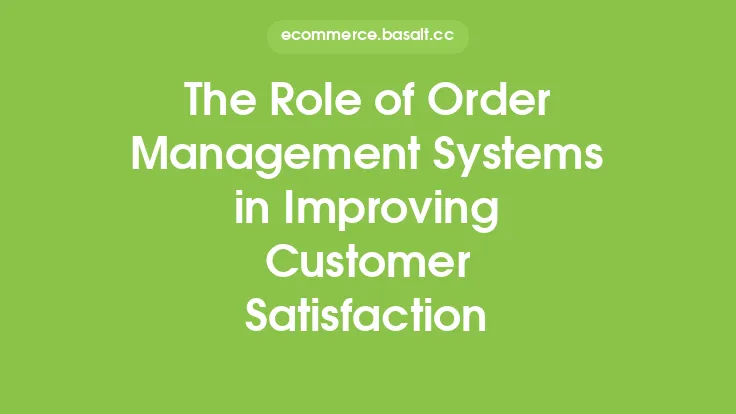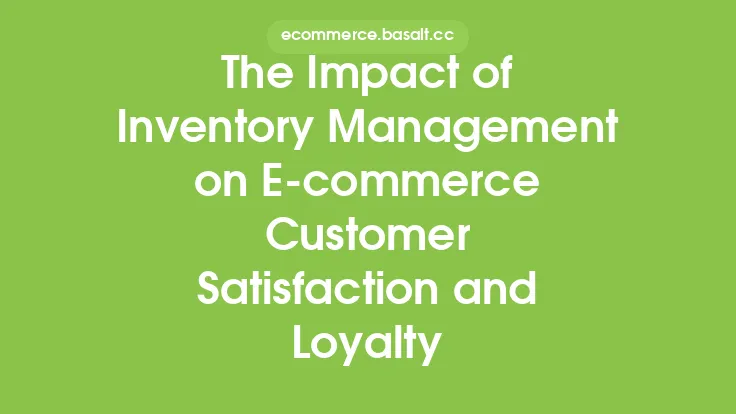Warehousing and storage play a crucial role in the order fulfillment process, as they enable e-commerce businesses to store, manage, and distribute their products efficiently. A well-organized warehouse and storage system can help businesses to improve their order fulfillment rates, reduce shipping times, and increase customer satisfaction. In this article, we will explore the importance of warehousing and storage in order fulfillment, and discuss the different types of warehousing and storage options available to e-commerce businesses.
Types of Warehousing and Storage
There are several types of warehousing and storage options available to e-commerce businesses, each with its own advantages and disadvantages. Some of the most common types of warehousing and storage include:
- Public warehouses: These are warehouses that are owned and operated by third-party logistics providers, and are available for rent to e-commerce businesses.
- Private warehouses: These are warehouses that are owned and operated by e-commerce businesses themselves, and are used to store and manage their own products.
- Bonded warehouses: These are warehouses that are specifically designed to store imported goods, and are subject to customs regulations and laws.
- Climate-controlled warehouses: These are warehouses that are designed to store products that require specific temperature and humidity conditions, such as food, pharmaceuticals, and electronics.
- Automated warehouses: These are warehouses that use automated systems and robotics to store, manage, and distribute products.
Benefits of Warehousing and Storage
Warehousing and storage can provide several benefits to e-commerce businesses, including:
- Improved order fulfillment rates: By storing products in a warehouse, e-commerce businesses can quickly and easily fulfill customer orders, which can help to improve customer satisfaction and loyalty.
- Reduced shipping times: Warehouses can be located near transportation hubs, such as airports and seaports, which can help to reduce shipping times and costs.
- Increased inventory control: Warehouses can provide e-commerce businesses with greater control over their inventory, which can help to reduce stockouts, overstocking, and other inventory-related problems.
- Enhanced security: Warehouses can provide a secure environment for storing products, which can help to reduce the risk of theft, damage, and other security-related problems.
- Cost savings: Warehouses can help e-commerce businesses to reduce their storage and shipping costs, which can help to improve their profitability and competitiveness.
Best Practices for Warehousing and Storage
To get the most out of their warehousing and storage operations, e-commerce businesses should follow several best practices, including:
- Implementing a warehouse management system (WMS): A WMS can help e-commerce businesses to manage their warehouse operations more efficiently, by providing real-time visibility into inventory levels, storage capacity, and shipping operations.
- Using barcode scanning and labeling: Barcode scanning and labeling can help e-commerce businesses to quickly and accurately track and manage their inventory, which can help to reduce errors and improve order fulfillment rates.
- Implementing a first-in, first-out (FIFO) inventory management system: A FIFO system can help e-commerce businesses to ensure that older products are sold or shipped before newer products, which can help to reduce inventory obsolescence and waste.
- Providing training to warehouse staff: Providing training to warehouse staff can help e-commerce businesses to ensure that their warehouse operations are running smoothly and efficiently, and that products are being handled and stored properly.
- Conducting regular audits and inspections: Conducting regular audits and inspections can help e-commerce businesses to ensure that their warehouse operations are compliant with laws and regulations, and that products are being stored and handled safely and securely.
Warehouse Layout and Design
The layout and design of a warehouse can have a significant impact on its efficiency and effectiveness. Some of the key factors to consider when designing a warehouse include:
- Storage capacity: The warehouse should have sufficient storage capacity to meet the e-commerce business's current and future needs.
- Aisle width and layout: The aisles should be wide enough to accommodate forklifts and other equipment, and should be laid out in a way that minimizes congestion and improves workflow.
- Shelving and racking: The shelving and racking should be designed to maximize storage capacity, while also providing easy access to products.
- Loading and unloading areas: The loading and unloading areas should be designed to accommodate trucks and other vehicles, and should be equipped with docks, ramps, and other equipment to facilitate loading and unloading.
- Security and safety features: The warehouse should be equipped with security and safety features, such as cameras, alarms, and sprinkler systems, to protect products and personnel.
Technology and Automation in Warehousing and Storage
Technology and automation are playing an increasingly important role in warehousing and storage, as e-commerce businesses seek to improve the efficiency and effectiveness of their operations. Some of the key technologies and automation systems used in warehousing and storage include:
- Warehouse management systems (WMS): A WMS can help e-commerce businesses to manage their warehouse operations more efficiently, by providing real-time visibility into inventory levels, storage capacity, and shipping operations.
- Automated storage and retrieval systems (AS/RS): An AS/RS can help e-commerce businesses to automate their storage and retrieval operations, by using robots and other automated equipment to store and retrieve products.
- Barcode scanning and labeling: Barcode scanning and labeling can help e-commerce businesses to quickly and accurately track and manage their inventory, which can help to reduce errors and improve order fulfillment rates.
- Radio-frequency identification (RFID) technology: RFID technology can help e-commerce businesses to track and manage their inventory in real-time, by using RFID tags and readers to monitor product movement and location.
- Robotics and artificial intelligence (AI): Robotics and AI can help e-commerce businesses to automate their warehouse operations, by using robots and other automated equipment to perform tasks such as picking, packing, and shipping.




